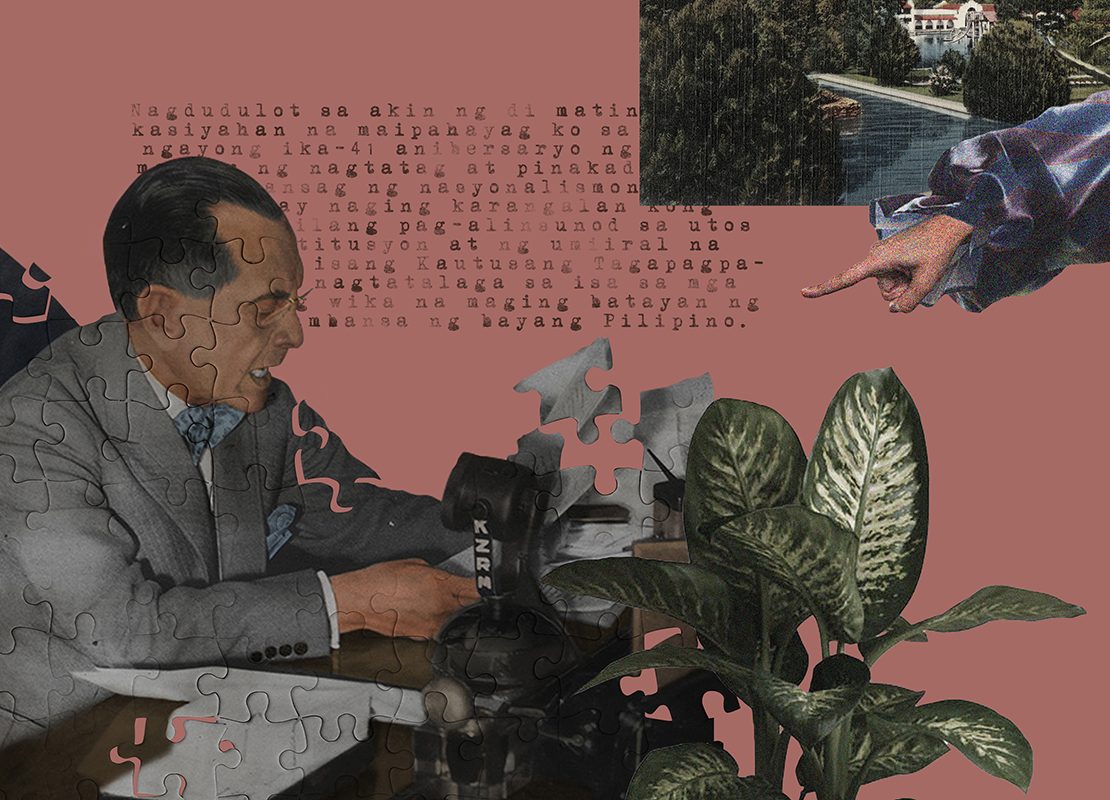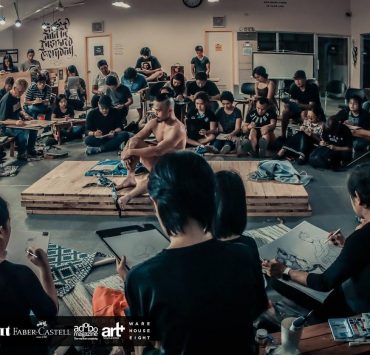It is easy to blame Manila for all of the country’s woes, from an uneven economy to problematic cultural representations. Manila has been called imperial, centralist, and hegemonic by the neglected peripheral cities or regions—and it is not without fault. The fact that our president hails from Davao could be a manifestation of a general desire to decentralize Manila, given that until the current administration, the government has been run by Manileños without much difference or progress felt in the provinces.
It is not far-fetched to think that even the formation of a national language based on Tagalog can be a symptom of this internal colonialism. However, accusing Manila is simplistic.
If we’d read the manuscript of speeches and proclamation of the national language which led to Manuel L. Quezon’s Executive Order no. 134 in 1937, we’d find that there is more to the issue than Manila-centrism.
First, there is no truth that there was a misrepresentation of or even a lack of representation from the regions who would have advocated for the adoption of their local languages to be the national language or lingua franca. A closer look at the composition of the National Language Institute (NLI) tells us that Cecilio Lopez was the lone advocate of Tagalog, while the rest—Filemon Sotto, Jaime de Veyra, Felix Salas Rodriguez, and Hadji Buta—were all from the south and were expected to advocate for Bisaya.
Second, the intention of looking for that local language was more practical than political: They were looking for the most widely circulated language, not only as spoken but also as written and produced in various media. In their mindset, a national language is practically disseminated all over, widely understood not only in the capital but also in the other regions, and capable of incorporating other languages. Even though Sotto believed that Visayan speakers outnumbered Tagalog speakers, in the end, the NLI accepted Tagalog as the most popular and the most capable in that function.
Reasonable choice
Incredibly, English, the congress then believed, would also qualify. However, they also knew that it would take some time for English to take root among locals. They then decided to make English one of the official languages—a language that would be used in the government, at least until a national language has been sought and developed. The vision behind the proclamation has always been inclusive and reflective of the heteroglossic nature and plurality of our lives.
We cannot fault Tagalog solely for its early development. Most likely, the lawmakers and the institute verified what had already been observed about Tagalog language. Fr. Pedro Chirino for instance, noted in Relacion de las Islas Filipinas Tagalog’s adaptability and affinity with the Spanish language in terms of the markers used to indicate positionality or formality—something that he failed to see in other languages. He compared the Tagalog and Bisayan translations of the Hail Mary prayer, and pointed out that Tagalog has words for exaltation and for addressing superiors. In fact, even as he lauded Tagalog for such capability, he insisted as well that certain words in Spanish like Espiritu Santo, or Dios should remain as they were.
As a Tagalog speaker myself, I remember how we were taught by our parents and teachers to use po and opo and the third person plural pronoun like sila or nila in addressing the elderly and authority figures. It was considered disrespectful to address even a stranger as ka or ikaw. In other words, there could be truth in the early observation of Tagalog as having an affinity with the formal and informal accents of Romance languages.
And if we look at our ladino poetry, from Fernando Bagongbanta to Gaspar Aquino de Belen’s Pasyon, it is difficult to ignore Tagalog’s wide circulation and translatability. National artist for literature Bienvenido Lumbera even noted how the development of Tagalog poetry culminated in Francisco Baltazar’s Florante at Laura.
Therefore, the adoption of Tagalog is not whimsical. The lawmakers and the NLI found simply that Tagalog can be tapped to develop a national language and identity.
But of course, intention is one thing; implementation is another. As Tagalog was adopted to be the national language, the incorporation of other Filipino languages into Tagalog took a backseat to the detriment of other languages like Ilocano and Bisaya. Tagalog tended to adopt more English words in the long run, which seemingly made it exclusive and divisive. The development of Tagalog became aggressive enough that linguists and writers invented a lot of words: salumpuwit for chair, salimpapaw for airplane, and portmanteau words like bantayog or bantay-tayog for monument and sipnayan or isip- hanayan for mathematics. It was only recently when this move was corrected and a greater awareness for the inclusion of local languages was fostered to truly transform Tagalog into “Filipino”—a lingua franca that bridges other languages. The recent publication of translated and researched works of Komisyon ng Wikang Filipino is a step in fulfilling this vision of an all-inclusive national language.
Calling Manila imperialistic is not only anachronistic but also retards thinking in general, simply because there is just so much work to be done in terms of translation and the production of literary works as well as other media projects in all these other languages. We should neither be hampered by parochialism nor constantly engaged in this petty bickering between Bisaya and Tagalog. Ultimately, we should work for a language that encapsulates our thoughts and experiences. Only then can we truly transcend not just our physical or geographical boundaries but also the horizon of our consciousness.




